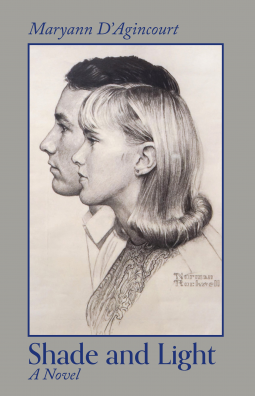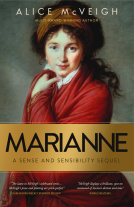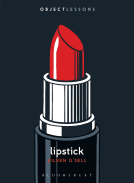
Shade and Light
by Maryann D'Agincourt
This title was previously available on NetGalley and is now archived.
Send NetGalley books directly to your Kindle or Kindle app
1
To read on a Kindle or Kindle app, please add kindle@netgalley.com as an approved email address to receive files in your Amazon account. Click here for step-by-step instructions.
2
Also find your Kindle email address within your Amazon account, and enter it here.
Pub Date 26 Nov 2018 | Archive Date 15 Nov 2021
Description
The effects of World War II resonate through the lives of two families - one American and one European - living outside of Boston. As Jenny grows up in the shadow of her parents' dark experiences in Trieste during the war, she is pulled to the haunting art and ironic gaze of her next-door neighbor Jonas, whose own father, preparing for deployment as an army medic, died before he was born. But when the mysterious Eric Stram enters her life unexpectedly, she learns how her parents' past is not behind them but will continue to push her life in unforeseen - and possibly unwanted - directions. From the author of Journal of Eva Morelli, this poignant tale of the echoes of the past and the complications of the present explores the tensions between duty to family, and the desires of the individual, and the striking way that art can draw disparate lives together.
D'Agincourt writes in the unique literary genre of Art Fiction. Shade and Light is the fifth work of fiction in Maryann D’Agincourt’s Art Fiction series. What is Art Fiction?
Journal of Eva Morelli is the first work of literary fiction in Maryann D’Agincourt’s Art Fiction series. Who are these two figures in the undergrowth? Why are they there? How mysterious they look as they blend into the landscape. Vincent Van Gogh does not provide clues to these question in Undergrowth with Two Figures, 1890 which graces the cover of Journal of Eva Morelli. Maryann D’Agincourt has merged her passions for art and literature into a unique and powerful form of storytelling. Art Fiction is a literary genre in which art is not solely an object, but is a reflection of what is human in all of us.
In All Most, the second in her Art Fiction series, Maryann D'Agincourt writes an insightful collection of short stories inspired by Oskar Kokoschka’s Two Nudes (Lovers),1913. Women’s fiction at its finest, Ms. D’Agincourt delves deep into the emotional lives of her characters and sheds light on the mysteries of human decisions and the significance of art and music in our lives. A work of art precedes each story as a vivid portrayal of how art inspires literature.
Glimpses of Gauguin, a novel in sketches, is the third work of fiction in Maryann D’Agincourt’s Art Fiction series. Ms. D’Agincourt has been viewing Paul Gauguin’s masterpiece Where Do We Come From? What Are We? Where Are We Going?, 1897-1898 from her early childhood visits to the Museum of Fine Arts in Boston to the present, providing inspiration for her stunning novel in sketches. Reflecting the themes evident in Paul Gauguin’s painting, Ms D’Agincourt explores the growth of a young woman facing the challenges of family life, school, relationships, love and marriage.
Printz is a novel about a man named Jacob Printz who lost his purpose in life. The one constant in Jacob’s life is the image of de Kooning's Seated Woman, c.1940 he first viewed as a much younger person, an image he comes back to over and over to make sense of the loves and losses in his life. This image symbolizes the world Jacob Printz inhabits, first with his sister Catherine and later with his lover Greta. And who is Jacob? Amedeo Modigliani's Portrait of Henri Laurens, sitting, 1915 captures him best.
Maryann D’Agincourt is an author who is inspired by art and artists. She often visited the Museum of Fine Arts, Boston as a young girl and merged her love of literature and art into the literary genre of art fiction.
Shade and Light is Book 5 in her Art Fiction series.
Available Editions
| ISBN | 9780999400630 |
| PRICE | US$4.99 (USD) |
Average rating from 12 members
Featured Reviews
Poignant prose and interesting, relatable characters; a tale of the past which infects the present and complicates the character's experience. D'Agincourt's story explores the frixion between duty and desire, family honour and individual struggle, through the art that binds the heroes' lives.
 Thomas M, Media/Journalist
Thomas M, Media/Journalist
(Note: This review appears online and in print at Mountain Times, Boone, NC).
Hede: Shadows reflect life in D'Agincourt's 'Shade and Light'
Because Maryann D’Agincourt does not write art fiction in black and white, her fifth offering of the form is the most aptly titled.
“Shade and Light” (Portmay Press) is a bewitchingly simple, modern novel filled with traditional complexities that entwine plot and character as an artist layers colors, crafting a final image to give pause, to make the viewer look deeper and question the depths of the portrait on display.
Gaze into “Shade and Light” and you will see how the personal effects of World War II bind and flow through two families — one so beholden to the other for rescue that the offspring becomes generational. The obligation of the parent is laid on the child.
Should it be? That is a question in one form or another that is central not only to this novel, but D’Agincourt’s oeuvre.
Here, Jenny lives in the darkness of her parents’ war experience in Trieste. Now, living outside of Boston, she is contemplating her young future when the much older Eric enters her life to raise the question of a daughter’s duty — first to family, or first to self?
There is after all a perceived obligation. The family's wartime debt can be paid by Jenny’s alliance with a man with whom she shares little, in contrast to the attraction she feels to her next-door neighbor, Jonas, and his haunting art.
“Her path in life was very clear. Did she love Eric out of a sense of duty? Whenever she asked herself this question, she understood it was unknowable. Her situation was complex and involved — any attempt to answer such a question would sound insincere and perhaps even false,” D’Agincourt narrates.
It is internal complexities that fuel “Shade and Light” — do not look for adventure here. D’Agincourt — whose unique prose is precise and efficient in that aromatic way that whiffs of translation — makes this point with a conversation between Jenny and her mother.
“American authors favor action; European authors write deep, complex novels, novels that touch the soul,” her mother admonishes.
“Shade and Light” embodies that complexity because, like life, it is textured. Yet, D’Agincourt tells us, it is through texture that clarity can be achieved.
This is the lesson Jonas learns after a lifetime of struggling to capture Jenny on canvas.
“Recently, he’d come across the sketch he had begun of Jenny that had turned out to be Belinda, his aunt. It struck him he’d done the drawing as if he’d been imagining Jenny in a stark light, not through shadow — that had been a mistake. … Surprisingly it had taken him years to realize.”
D’Agincourt condenses those years in “Shade and Light.” The lessons of a lifetime are offered in trade for a few hours spent gazing at the strokes of the novelist’s brush. The deal is a fair one.
 Bonnye Reed F, Reviewer
Bonnye Reed F, Reviewer
An interesting look at the lives of families affected by personal travails in Trieste during World War II, and the personality quirks and insecurities that carry back to those experiences. Jenny was born in the US after her parents immigrated, but Eric still carried the darkness within despite his years in America. Even Jonas, a several generation American, finds his life marred by the fact that his father died - of an illness before he was shipped overseas to fight in the war. The effects and aftereffects seem never ending.
That said, this novel was almost exclusively a series of mental gymnastics. I can understand better the term Art Fiction since I tackled it, but I found it very limiting and a read downer in places. Still, an interesting experience.
I received a free electronic copy of this historical novel from Netgalley, Maryann D'Agincourt, and Portmay Press LLC in exchange for an honest review. Thank you all for sharing your hard work with me.
I received an advanced digital copy of this book from Netgalley.com and the publisher. Thanks to both for the opportunity to read and review this book.
Ms. D'Agincourt has written a beautiful book that is full of descriptive prose that fills your head with imagery as you read it. Ultimately it is a story about family and love and loss.
4 out of 5 stars.
When you visit an art gallery or museum, how do you view the drawings and paintings? Do you view them with the mind of a reader and thinker, or through the eye of an artist? This book will help you see art and life through your mind and through your eyes.
Author Maryann D'Agincourt writes in the unique literary genre of Art Fiction. Shade and Light is the fifth work of fiction in her Art Fiction series. I had never heard of art fiction, so that is why I chose to read this book.
According to the book information, Art Fiction is a literary genre in which art is not solely an object, but is a reflection of what is human in all of us. A work of art precedes each story as a vivid portrayal of how art inspires literature. For this book, a drawing by Norman Rockwell guides us as we read the story of Jenny, Jonas, and Eric.
Each of the three main characters has a story that is somber and dark, more shadow than light. We meet Jenny, Jonas and Eric as young people and observe as their lives entwine as each looks for their purpose. The book is written in the third party omniscient point of view, which keeps us at a distance.
As readers, we see them as displays of artwork. We are told about them and as we “look” at them, it is up to us to see what we want or can. Plot is not the point of this book. There is no “big reveal” or answer. In art, “light and shadows” visually define objects. Before you can draw the light and shadows you see, you need to train your eyes to see like an artist. And you need to read this book like an artist.
For me, this was only a 3-star read, because I felt so distant and removed from the characters. However, the book is well-written and other readers might be able to better bridge the mind of the writer and the eye of the artist than I could.











